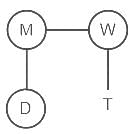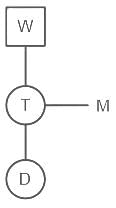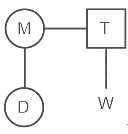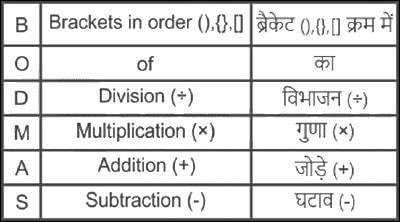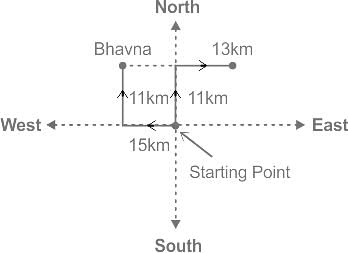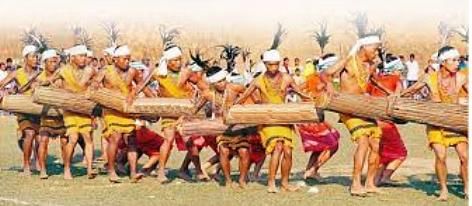SSC Stenographer Mock Test - 6 - SSC Stenographer MCQ
30 Questions MCQ Test - SSC Stenographer Mock Test - 6
Directions: In the following question you have to identify the correct response from the given options according to following symbols:
If '–' stands for division '+' stands for subtraction, '÷' stands for multiplication, '×' stands for addition, then which one of the following is correct?
Read the following information and answer the question given below it:
There are five friends - Sachin, Kunal, Mohit, Anuj and Rohan.
Sachin is shorter than Kunal but taller than Rohan.
Mohit is the tallest.
Anuj is a little shorter than Kunal and little taller than Sachin.
Who is taller than Anuj but shorter than Mohit?
If 'P × Q' means P is the mother of Q,
'P ÷ Q' means P is the sister of Q,
'P + Q' means P is the daughter of Q, and 'P - Q' means P is the father of Q, then which of the following means D is the cousin sister of W?
'P ÷ Q' means P is the sister of Q,
'P + Q' means P is the daughter of Q, and 'P - Q' means P is the father of Q, then which of the following means D is the cousin sister of W?
What should come in place of ? in the given series based on the English alphabetical order?
QCT NHP KML HRH ?
Three of the following four letter-clusters are alike in a certain way and one is different. Pick the odd one out.
If ‘+’ means ‘divided by’, ‘ ̶ ’ means ‘added to’, ‘×’ means ‘subtraction’ and ‘÷’ means ‘multiplied by’, what will be the value of the following expression?
(43 × 23 -(4 ÷ 3)) + (12 - 4) ÷ 3
Anurag and Bhavna started driving from the same point. Anurag drove North for 11 km, then turns right and covers 13 km. Bhavna goes West and covers 15 km, then turns right and covers 11 km. How far apart are they from each other in a straight line?
Arrange the following capital cities of the Mughals according to the timeline. (from first to the last)
(1) Fatehpur Sikri
(2) Shahjahanabad
(3) Agra
(4) Lahore
Choose the correct answer from the options given below :
Wangala is a most famous festival of the Garo tribe of ______.
In the given expression of GDP according to the expenditure method, which of the following represents the aggregate imports expenditure incurred by the economy?
C + I + G + X - M
Directions: In this section, each item consists of six sentences of a passage. The first and sixth sentences are given in the beginning as S1 and S6. The middle four sentences in each have been jumbled up and labelled as P, Q, R and S. You are required to find the proper sequence of the four sentences and mark your response accordingly on the answer sheet.
S1. The global economy has been significantly impacted by the rise of cryptocurrency.
S6. This has led to a transformation in how businesses operate and individuals transact.
P. Countries are now evaluating the potential of adopting digital currencies as legal tender.
Q. Initially, cryptocurrencies were viewed with skepticism due to their volatile nature.
R. As adoption increased, governments began to recognize the importance of regulating this new form of currency.
S. Its increasing acceptance has played a pivotal role in its integration into the financial system.
Parts of the following sentence have been given as options. Select the option that contains an error.
Everyone should respect those parents, teachers, and elders.
Select the most appropriate option to fill in the blank.
The patient is serious; the doctor should be immediately sent ______.
Select the most appropriate ANTONYM of the given word.
Grumble
Select the appropriate synonym for the underlined word.
Are you kidding?
Identify the most appropriate indirect speech statement for the given sentence:
The clerk said, "I am here to settle accounts today."
Select the option that expresses the given sentence in direct speech.
Pihu said that she might buy a new smartphone.
In the following question, a sentence has been given in Direct/Indirect speech. Out of the four alternatives suggested, select the one which best expresses the same sentence in Indirect/Direct speech.
The secretary said to his employee, "Don't show me your face."
Select the most appropriate option that can substitute the underlined segment in the given sentence.
The fluffy cat used to make a feeble cry by the others only which food was supplied by Leepika.
Sentences of a paragraph are given below in jumbled order. Arrange the sentences in the correct order to form a meaningful and coherent paragraph.
A. Following the demise of the Indus Valley civilisation, the Aryans migrated to India.
B. There is proof that the Aryans possessed a scientific outlook.
C. They held that the universe was regulated by a natural law known as Panchbhutas (five components).
D. Prithvi (heart), Ap (water), Tejas (heat), Vayu (air), and Akasa (sky) are these factors.
The following sentence has been split into four segments. Identify the segment that contains a grammatical error.
It takes me an hour / to get to work at the moment, / but when the new road is finished, / it be much quicker.
Select the most appropriate option to fill in blank no. 5.
Direction: Select the most appropriate synonym of the given word.
Commotion
Select the option that will improve the underlined part of the given sentence.
PRIMARY


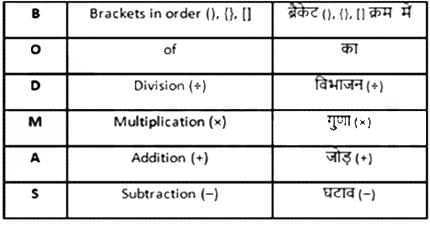
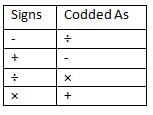

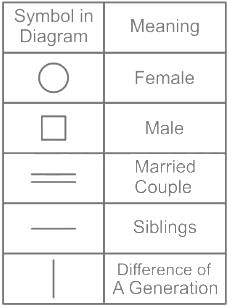

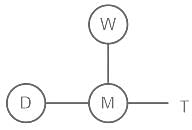 → Here, D is the daughter of W.
→ Here, D is the daughter of W.